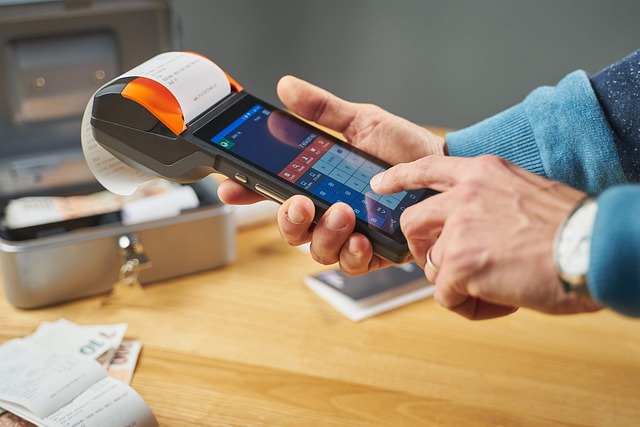By Shane Rodgers, CEO of PDX Global
One of the most significant shifts in recent years is the growth in cryptocurrency value and crypto wealth. According to Capital One, consumers—especially younger and tech-savvy ones—are increasingly looking for merchants that accept crypto payments.
For businesses looking to modernize their payment infrastructure, now is the time to act. The right crypto payment gateway can provide a competitive edge, enhance customer satisfaction, and position retailers at the forefront of the digital payments revolution.
The question is, how do we get there? The way consumers pay for goods and services is constantly evolving, but many retailers have never used cryptocurrencies themselves and are even less sure how to choose a crypto payment provider.
It goes without saying that retailers who want to stay ahead of the curve need to embrace new technologies. However, not all payment gateways are created equal. Here are five essential requirements to look for when choosing your currency payment gateway.
1. Ability to Settle in Local Currency
This may sound like a contradiction, but as a retailer, you want the value offered by crypto currency—but you don’t want the currency itself. For many retailers, one of the biggest concerns about accepting crypto payments is the potential volatility associated with digital currency.
A top-tier crypto-to-local currency gateway should eliminate these concerns by automatically converting crypto payments into local currency. Choosing the right gateway with built-in conversion means you won’t have to worry about managing crypto wallets, safeguarding digital assets, or dealing with market fluctuations.
2. Compatibility with any POS System
The right crypto payment gateway should be universally compatible with all existing POS systems, whether they are traditional cash registers, mobile-based payment apps, or e-commerce platforms. The ideal solution should come with APIs, plug-ins, or simple software updates that allow retailers to enable crypto payments with minimal technical effort.
A good rule of thumb: if the system requires a costly or complex overhaul or is unnecessarily proprietary, steer clear!
3. User-Friendly Experience for Consumers
Adopting crypto payments shouldn’t mean sacrificing customer convenience. An ideal crypto payment gateway will allow customers to make payments as easily as they would with a credit card or mobile wallet. If paying with crypto is cumbersome or requires multiple steps, consumers may abandon their purchases or opt for a different retailer that offers a better experience.
QR code scanning, NFC payment capabilities, and one-click transactions should all be supported to make the process frictionless. In the case of my company, the consumer uses an app that generates a QR code for the retailer to scan, similar to loyalty purchases at your local coffee shop.
4. Instant Currency Conversion with Immediate Settlement
A reliable crypto-to-local currency gateway should provide instant or near-instant conversion and settlement. This includes conversion; soon as a customer completes a transaction using crypto, the payment should be converted into the retailer’s local currency and deposited into their account within minutes. My own gateway settles the funds within 15 seconds.
Why does this matter? Cash flow is a critical concern for retailers. Waiting days for funds to settle can create operational challenges. Due to the many intermediaries involved in a single transaction, traditional payment processors often cause delays in getting money into a merchant’s account. Your crypto payment gateway should not add to this problem.
5. Avoidance of High Merchant Fees and Risk-Prone Payment Rails
Hear me on this: with a cryptocurrency gateway, you should be paying less as a merchant than you would for credit card payments.
Unlike traditional credit card networks that may charge between 2% to 4% per transaction, blockchain transactions can lower the cost to a fraction of that amount. That’s because blockchain-based payments are peer-to-peer transactions. They cut out the middleman, significantly reducing processing costs.
If your provider charges the same fees as a credit card, chances are they are either (1) taking a big cut themselves, or (2) running on the same old payment rails. Stay away; you can do better.
Future-Proofing Retail Payments
Accepting crypto payments is no longer a futuristic concept—it’s a strategic advantage that can help retailers attract new customers, reduce transaction fees, and stay ahead in an evolving financial landscape.
Selecting the right criteria can save merchants hassle and risk. But it’s also a risky investment for retailers who don’t understand the crypto landscape yet. Remember that any choice you make should be a step forward. Don’t settle for anything less.
About author
 Shane Rodgers is CEO of PDX Global, developer of crypto payment gateway PDX Beam.
Shane Rodgers is CEO of PDX Global, developer of crypto payment gateway PDX Beam.
Related Articles

Hexnode CEO on how the “Holiday Illusion” is Masking the Risks of Retail’s Seasonal Workforce
The danger of seasonal hires is magnified not just by who is accessing the network, but when they are doing it. Sophisticated threat actors possess a deep understanding of the retail operational calendar.

The New Frugality: How Inflation and Tariffs Are Reshaping Consumer Spending
One of the most telling shifts is how shoppers approach decision-making. Where convenience once dominated, consciousness now plays a larger role. People are researching more before making a purchase, comparing prices across multiple platforms, and questioning whether they really need the product in the first place.

Embracing new concepts vs the return to brick-and-mortar
Balancing the return to physical retail and the development of new technologies to enhance customer experience and drive operational efficiency for long-term success.
Enartis to Acquire Parsec in Winemaking and Retail Deal
The deal will bring Enartis and Parsec together to help wineries manage every part of production more easily and efficiently, from grape to bottle.


 for the latest news and job opportunities in retail tech
for the latest news and job opportunities in retail tech 